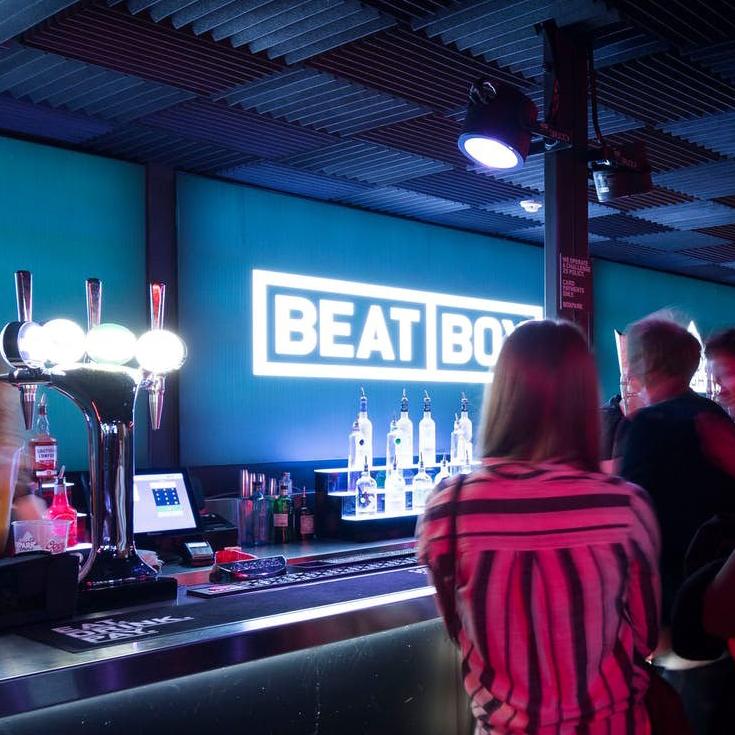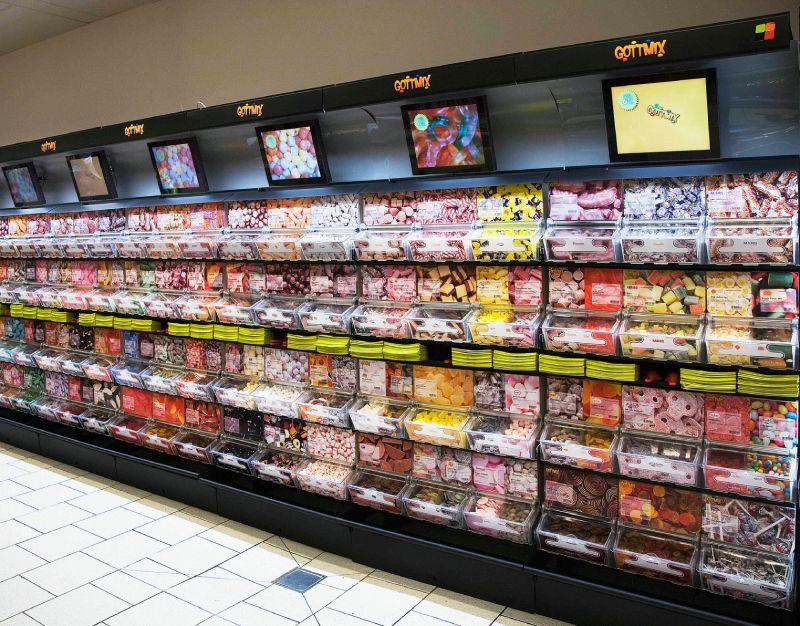Public speaking is an art that requires not only excellent communication skills but also the right tools to effectively convey your message to the audience. Among the essential tools are podiums, lecterns, and pulpits, which are often used interchangeably but have distinctive features and purposes. Knowing the differences between the three can help you choose the right type of speaking platform for your needs and avoid potential mishaps during your presentation.
As experts in the field of podiums and lecterns, we at Luminati have had the pleasure of providing high-quality speaking platforms to universities, lecture halls, and businesses across the country. Our products have been used by countless speakers to deliver informative, persuasive, and inspiring presentations to audiences of all sizes. In fact, even members of the royal family have used our lecterns on occasion. For example, in 2019, Prince William used one of our lecterns during a Royal Foundation event, highlighting the universal appeal and importance of these speaking platforms.
In this blog post, we’ll take a closer look at podiums, lecterns, and pulpits and explore their unique features, purposes, and the situations where they are most commonly used. By the end of this article, you’ll have a better understanding of the differences and similarities between these speaking platforms and be equipped with the knowledge you need to deliver a successful presentation.
Podiums
Podiums are speaking platforms that are typically elevated and provide a surface for the speaker to place their notes or other materials. They are commonly used in a variety of settings, including conferences, graduations, and political rallies, among others.
The typical features of a podium include its height, which can range from a few inches to several feet depending on the type of event and the size of the audience. The platform size also varies, with some podiums designed to accommodate a single speaker and others large enough to hold multiple speakers at once.
Podiums can be made of various materials, including wood, metal, and plastic, and can come with additional features such as built-in microphones, lighting, and storage compartments.
Podiums differ from lecterns and pulpits in that they are typically larger and more substantial in size. While lecterns and pulpits are designed for the speaker to stand behind, podiums are meant for the speaker to stand on top of. Podiums are often used in situations where a speaker needs to be elevated above the audience, such as in large auditoriums or arenas.
For example, a keynote speaker at a conference might use a podium to deliver their speech, as it allows them to stand out and be seen by the entire audience. Similarly, a politician delivering a campaign speech might use a podium to project their presence and authority. Overall, podiums are a versatile and practical tool for speakers looking to make an impact on their audience.
Lecterns
A lectern is a speaking platform that is typically designed with a slanted surface for holding notes or a speech manuscript. Lecterns are commonly used in a variety of settings, including universities, places of worship, and conference halls.
The typical features of a lectern include its height, which can range from waist height to floor height depending on the user’s preference and the intended use. The slanted surface is another defining feature of a lectern, as it allows the speaker to comfortably read their notes or manuscript without having to look down or strain their neck. Additionally, many lecterns come equipped with a built-in microphone to amplify the speaker’s voice.
Lecterns differ from podiums and pulpits in that they are generally smaller and less elevated. While a podium is meant for a speaker to stand on top of, and a pulpit is often an enclosed structure that a speaker stands behind, a lectern is simply a stand for holding notes or a manuscript. Lecterns are often used in situations where the speaker does not need to be elevated above the audience, such as in a classroom or small conference room.
For example, a professor might use a lectern in a classroom setting to hold their notes and manuscript, allowing them to refer to the material while still engaging with their students. Similarly, a speaker at a business conference might use a lectern to hold their notes and manuscript, ensuring they can stay organized and deliver their message effectively. Overall, lecterns are a practical and functional tool for speakers looking to stay organized and focused during their presentation.
Types of Lecterns
- Tabletop lecterns: These are compact and lightweight lecterns that can be placed on top of a desk or table. They are often used in small classrooms, meetings, and seminars.
- Floor lecterns: These are freestanding lecterns that can be adjusted to various heights. They are commonly used in larger conference rooms, lecture halls, and places of worship.
- Podium lecterns: These are hybrid lecterns that combine the features of both podiums and lecterns. They are typically taller than tabletop lecterns but shorter than floor lecterns and provide a larger platform for the speaker to stand on.
- Acrylic lecterns: These are lecterns made of clear acrylic material, providing a modern and sleek look. They are often used in contemporary settings such as business conferences, trade shows, and modern lecture halls.
- Wooden lecterns: These are lecterns made of wood, providing a traditional and classic look. They are commonly used in places of worship, universities, and historical venues.
- Portable lecterns: These are lecterns that are designed to be easily transported from one location to another. They are often lightweight and foldable, making them ideal for speakers who frequently travel or move between different venues.
- Church lecterns: These are specialized lecterns used specifically in religious settings, such as churches and chapels. Church lecterns are often ornate and decorative, featuring religious symbols and intricate details that reflect the character and history of the religious institution. They are typically made of wood and are designed to blend in seamlessly with the surrounding architecture and decor.
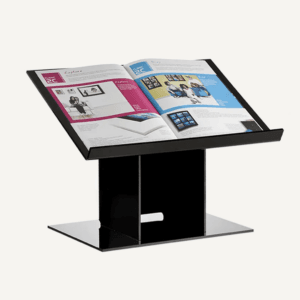
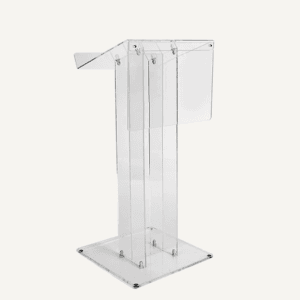
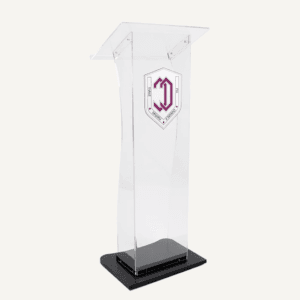
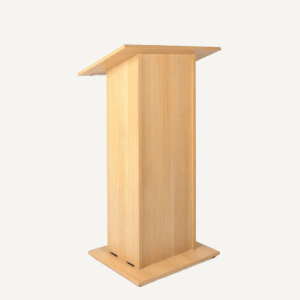
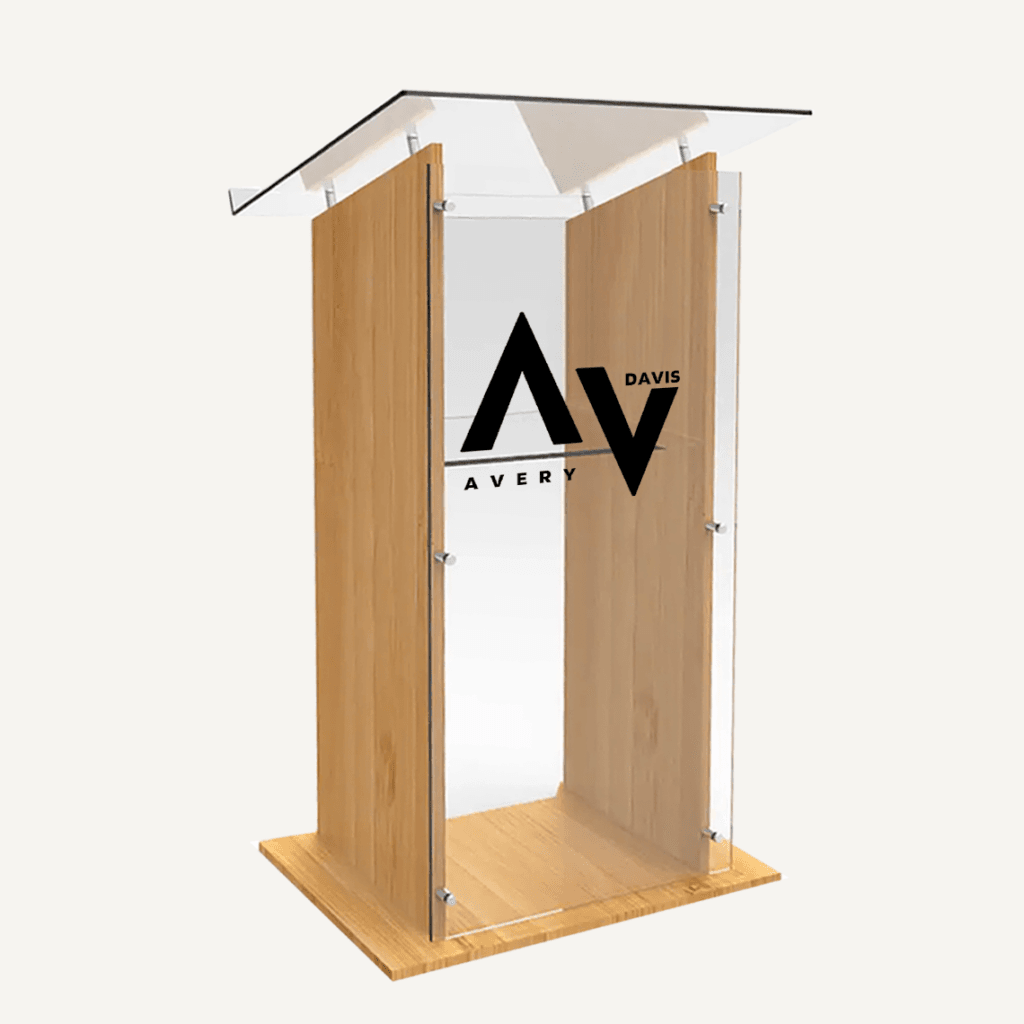
Pulpits & Lecterns in Churches
A pulpit is a raised platform, often enclosed, used by a speaker in a religious setting, such as a church or mosque. The purpose of a pulpit is to provide a focal point for the congregation to direct their attention towards the speaker during a sermon or other religious service.
The typical features of a pulpit include its height, which can vary depending on the design and the size of the congregation. It is usually raised above the ground level and can be reached by a set of stairs. A pulpit is often enclosed with walls, doors, and sometimes even a roof, to give the speaker a sense of privacy and authority. Pulpits may also feature religious symbols, such as crosses or other emblems of the faith.
Pulpits differ from podiums and lecterns in that they are generally larger and more enclosed, and are designed for the speaker to stand behind rather than on top of or in front of. Pulpits are often used in religious settings, such as churches or mosques, where the speaker is expected to deliver a religious message to the congregation.
For example, a priest delivering a sermon in a Catholic church might use a pulpit to deliver their message, standing behind the enclosed structure and using the raised platform to project their voice and engage with the congregation. Similarly, a mosque might have a pulpit, known as a minbar, where the imam can deliver the Friday sermon to the congregation.
Overall, pulpits serve a specific function in religious settings, providing a focal point for the congregation to direct their attention towards the speaker and giving the speaker a sense of privacy and authority.
What is a lectern in a church?
A lectern is a piece of church furniture that serves as a stand for the Bible, hymnals, and other liturgical books used during a church service. It is typically made of wood or metal and is designed to be both functional and ornamental. The lectern is typically placed in the front of the church, near the altar, and is often used by the person leading the service, such as the pastor or priest, to deliver a sermon or reading. The lectern is an important symbol of the Word of God and the role of the church in spreading that Word.
Why does a lectern have an eagle on it?
A lectern with an eagle on it is a common sight in many churches. The eagle is a symbol of the Gospel writer John, who is often depicted with an eagle in Christian art. The eagle represents John’s soaring spiritual insights and his emphasis on the divine nature of Jesus Christ. In addition, the eagle is a symbol of the resurrection and the ascension of Christ, as eagles were believed to be able to stare directly at the sun, which was seen as a symbol of God’s glory.
Final Thoughts
In conclusion, podiums, lecterns, and pulpits are essential speaking platforms that provide a variety of features and purposes to help speakers deliver effective presentations. Understanding the differences between the three can help you choose the right type of speaking platform for your specific needs and ensure a successful presentation.
As experts in the field of podiums and lecterns, Luminati offers a wide range of high-quality speaking platforms for all types of businesses and venues. From tabletop lecterns to floor-standing podiums, our products are designed to meet the needs of speakers in various industries and settings. As one of the market leaders in the UK, we are committed to providing excellent customer service and top-of-the-line products that meet the highest standards of quality.
Whether you’re a student, a professional, or a member of the clergy, having the right speaking platform can make all the difference in delivering a successful presentation. We hope this article has helped you better understand the differences and similarities between podiums, lecterns, and pulpits and has given you the knowledge you need to choose the right speaking platform for your needs.


